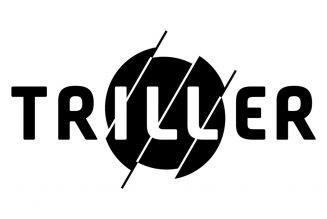“Google is once, twice, three times a monopolist,” the DOJ says.
Share this story

Google and the Department of Justice met one final time in an Alexandria, Virginia courtroom to debate the future of Google’s online ad tech juggernaut.
Over about three hours of closing arguments, attorneys for each sidedelivered their last arguments before US District Court judge Leonie Brinkema, who is expected to rule on it by the end of 2024. If she declares Google’s ad tech system a monopoly, the case will progress to a second trial for remedies — a process currently playing out in a separate DC District Court case over Google search.
Many of the arguments were familiar to any Google trial watcher. The DOJ argues Google used a suite of ad tech products, particularly Doubleclick For Publishers (DFP) and the AdX exchange, to strong-arm site owners and advertisers. Google counters that it faces competition from other sources and shouldn’t have to cut deals with competitors. But the final statements let Brinkema, who spent the trial’s early days asking witnesses to break down complex technical topics, push back on each side’s arguments — this time with a solid command of the facts.
One of the trial’s biggest questions is how many markets Google actually works in. The government sees three separate ad markets that Google dominates: one for publisher ad servers, one for ad exchanges, and one for advertiser ad networks. Google says there’s a single, two-sided market of buyers and sellers for digital ads, putting Google in competition with social media companies like Meta and TikTok.
Google’s reference point is a 2018 Supreme Court precedent called Ohio v. American Express. The ruling considered whether a policy AmEx imposed on merchants unfairly suppressed price competition. The court decided that there was a single market comprised of merchants and credit card users, and it required the government to prove harm on both sides — a higher standard to meet.
The governmentin this case has argued this isn’t a reasonable comparison, and in closing arguments, Brinkema seemed to agree. “I’ve read that AmEx case more times that I probably should have,” Brinkema said during Google counsel Karen Dunn’s closing arguments. “We’re dealing with a completely different set-up, it seems to me.” Brinkema said that earlier in the case, she thought Google made “a very attractive argument” for its AmEx comparison, but the more she read it, the less it mapped onto this case.
Still, Brinkema asked why the government focused most of its attention during the trial on publishers and called ad agency witnesses rather than advertisers themselves. DOJ counsel Aaron Teitelbaum said publishers’ issues with Google (like frustrating ties between DFP and AdX) were particularly good at highlighting anticompetitive conduct, that stemmed from Google’s access to advertisers through its ad network, and that ad agencies — not their advertiser clients — were the ones typically navigating Google’s products.
She also asked how the DOJ would attempt to win if she finds a single, two-sided market. Teitelbaum said that even in that scenario, the court can find direct evidence of monopoly power where Google does something it knows customers won’t like — like Unified Pricing Rules (UPR) that prevented publishers from setting higher prices on Google’s AdX than on other servers. That’s something only a monopolist could do, he said.
Google’s second big legal weapon is a 2004 ruling known as Verizon v. Trinko — which said, very broadly, that Verizon wasn’t required to share its telecommunications network with AT&T. Trinko says under most circumstances, companies can refuse to deal with competitors. Google argues that its products are already interoperable with other ad tech services, and requiring more of that interoperability by law would make Google’s advertiser customer base into “community property.”
The DOJ has retorted that Trinko isn’t about dealing with your own customers. “Every single instance of conduct is Google versus its customers,” Teitelbaum said — pointing to instances where Google removed options for users in its ad tools. But Brinkema seemed unsure of that argument, saying AdX in particular seems to be in direct competition with other ad exchanges, and is not customer-facing in the way the DOJ tried to argue.
As Google makes its arguments, it’s being dogged by an accusation that’s followed it into courtroom after courtroom: a claim that it deliberately deleted chat messages that could have made it look bad. Google says most messages were simply casual water-cooler conversation, but it’s conceded some included substantive business discussions. The DOJ wants Brinkema to draw an adverse inference wherever she’s in doubt about what deleted messages said — in other words, assume the deleted messages would have looked bad for Google’s case.
Dunn, from Google, accused the government of cherry-picking ominous-sounding lines from Google executives in internal documents. When read with full context, Dunn argued, some simply show people riffing on topics where they acknowledge they have little expertise. They could even demonstrate that Google welcomed employees sharing thoughts over email.
But Brinkema said that Dunn was “getting close to the very significant argument plaintiffs have raised”: the fact that nobody actually knows what executives were thinking in some cases, because those chats are gone. “I think you’re in a little bit [of] dangerous territory,” she warned.









